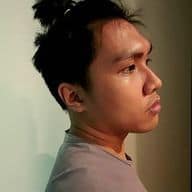Proteins are the building blocks of life, and as such, they are essentially necessary for the body to absorb to function optimally. But how much protein can your body process? And how much of it do you need daily?
- How Much Protein Can Your Body Process in One Sitting?
- What is Protein & Why Is It Important?
- How Does the Body Process Protein?
- Factors Affecting Protein Absorption
- How Much Protein Can Your Body Absorb in One Sitting?
- Optimal Protein Intake for Different Individuals
- Protein Quality and Bioavailability
- Protein Powder vs. Food-Based Protein: How Does the Body Process Them?
- How The Body Processes Protein Powder vs. Whole Foods
- Risks of Excessive Protein Intake
- Tips for Maximizing Protein Absorption
- Frequently Asked Questions (FAQs)
- Conclusion
- Related Articles
How Much Protein Can Your Body Process in One Sitting?
Always consult with a healthcare provider for personalized advice.
What is Protein & Why Is It Important?
Individuals need to consume protein every day. Proteins are considered the building blocks of life since every cell in the body contains them. They play many critical roles in the body, do most of the work in cells, and are required to structure, function, and regulate the body’s tissues and organs.
Proteins are made up of essential amino acids in equal amounts such as:
- Histidine
- Isoleucine
- Leucine
- Lysine
- Methionine
- Phenylalanine
- Threonine
- Tryptophan
- Valine
These amino acids help build muscles, cause chemical reactions in the body, transport nutrients throughout the body, prevent illnesses, and among other functions.
A regular protein intake can create a huge positive difference in one’s overall health. It provides the following health benefits:
- Builds muscle mass – Eating protein-rich foods or taking protein-based supplements can help maintain muscle mass and promote muscle growth.
- Speeds up recovery from injuries – Eating a protein-rich diet is often recommended to speed up recovery from muscle injuries.
- Skin and bone growth and development – Since hair and nails are mostly made of protein, it’s important to take proteins regularly for proper nail and hair growth.
- Curbs appetite and food cravings– Protein helps you feel more full with less food, so you won’t feel the urge to eat as often. It does so by reducing levels of ghrelin, the hunger hormone, and increasing peptide YY levels, which is a hormone that makes you feel full.
- Helps with weight management – Aside from curbing appetite, eating a regular amount of protein can change weight-regulating hormones and even boost metabolism.
- Repairs and forms new tissues – One of the primary functions of protein consumed in the diet is building and repairing cells, including the muscle cells damaged when exercising to momentary fatigue,
- Promotes hormone regulation – Protein plays an important role in hormone regulation, especially during the transformation and development of cells during puberty.
With all these benefits considered, it makes protein a staple for the physically active such as athletes and fitness enthusiasts, who aim for greater muscle mass, faster muscle recovery, and achieve overall improved physical performance.
How Does the Body Process Protein?

How does the body process the protein you get from foods? When you eat food the body’s digestive system processes the protein into individual amino acids, which are absorbed and used by cells to create new proteins. The process also creates nucleic acids or macromolecules, such as DNA and RNA.
Protein Absorption
Protein absorption occurs when some proteins are absorbed from the small intestine through cells in the intestinal wall into the blood, which carries them wherever they are needed in the body. The two major enzymes that digest the proteins in the small intestine are chymotrypsin and trypsin. The latter activates proteases, which are protein-digesting enzymes, and together, these enzymes break down the proteins into tripeptides, dipeptides, and individual amino acids.
Protein Synthesis
The amino acids, specifically the branched-chain amino acids (BCAAs) leucine, isoleucine, and valine, are then used in different combinations in protein synthesis, which is the process where cells make proteins. Protein synthesis then occurs in two stages, transcription, where the genetic instructions of DNA are transcribed to mRNA in the nucleus, and translation, where the mRNA along with transfer RNA (tRNA) and ribosomes work together to produce proteins
Factors Affecting Protein Absorption
There are various factors affecting the body’s protein absorption
Individual metabolic rate
A person’s metabolic rate can determine a person’s protein absorption. Studies show that digesting protein can speed up the metabolic rate by 20-35% while carbs do so at a rate of 5-15%.
An average male has a basal metabolic rate (BMR) of 7,100 kJ (kilojoules/calories) per day, while the average female has 5,900 kJ.
Age
Studies show protein digestion and absorption into the circulation is much lower among older adults, compared to younger ones. This fact explains their increased protein needs as they age.
Sex
In terms of gender, males tend to have larger BMIs and more muscle mass compared to females. Ergo, they may need more protein to meet their body’s caloric and energy needs.
Physical activity level
A person with a physically active lifestyle requires more protein than those who are inactive (sedentary). Eating protein after physical activity stimulates muscle protein synthesis, inhibits protein breakdown, and even stimulates net muscle protein accretion. One study suggests that physically active people should consume 1.2 to 2 grams of protein per kilogram of their body weight
How Much Protein Can Your Body Absorb in One Sitting?
According to a study published in the Journal of the International Society of Sports Nutrition, muscle protein synthesis is maximized at a protein dose of around 20 to 25 grams, which means the body can absorb a maximum of 25 grams of protein in one sitting (1.5-2 hours after a meal). The study also says that fast-digesting proteins like whey and hydrolyzed protein are absorbed by the body at a rate of roughly 10 grams per hour, meaning it absorbs 20 grams.
However, if you consume more than 25 grams of protein in one sitting, the body won’t utilize it nor give muscle growth an extra boost. If the muscles receive more than the maximum amount of protein at a single time the excess may be carried to other parts of the body where it may be stored as fat, or be expelled with undigested food.
Optimal Protein Intake for Different Individuals
Each individual has a different protein requirement based on sex, age, lifestyle, and weight:
Athletic Individuals
Physically active individuals should consume 1.2 to 2.0 grams per kilogram of body weight. Here’s a projected calculation for active men and women based on their weight:
- Average active man (80 kg) – 128g to 192g daily
- Average active woman (60 kg) – 96g to 144g daily
Sedentary Individuals
People with a sedentary lifestyle need 0.8 grams of protein per kilogram of body weight, significantly less than active people.
- Average sedentary man – 56 g daily
- Average sedentary woman – 46 g daily
Elderly People
Researchers recommend that older adults or seniors should consume between 1.2 and 2.0 g (or higher) per kilogram of body weight, which is essentially similar to the RDA of athletic people, given that older adults have higher protein requirements than younger ones.
Calculating Your Weight In Kilograms
To determine your weight in kilograms, simply divide your weight in pounds by 2.2, and then multiply this number by 0.8.
Protein-rich diets including the food options mentioned above and some supplements can help meet these daily protein requirements.
Protein Quality and Bioavailability
Protein quality refers to the availability of amino acids that protein supplies while bioavailability is the amount of protein we absorb and is affected by several factors including the total amount of types of protein consumed within one meal as well as other constituents of the meal.
The protein is also measured by its:
- Biological Value (BV) – BV is a measure of the proportion of absorbed protein that is incorporated into the proteins of the body. Animal-based protein sources such as meat, fish, eggs, milk, cheese, and yogurt, have higher biological value proteins, while those plant-based foods like legumes, grains, nuts, seeds, and vegetables, offer a lower biological value.
- Digestible Indispensable Amino Acid Score (DIAAS) – The DIAAS is determined by the protein’s most limiting digested indispensable amino acids. Egg white protein, for example, has a high net protein utilization, with a score of 100 in the amino acid rating system.
This method was first proposed to replace PDCAAS in 2013.
- Protein Digestibility Corrected Amino Acid Score (PDCAAS) – Up until 2013, the PDCAAS was used to evaluate protein quality based on a person’s amino acid requirements and their ability to digest it. One limitation of this scoring system is that its maximum score (1.0) could only be reached by a single amino acid, while the DIAAS scale provides a more accurate protein quality score
Protein Powder vs. Food-Based Protein: How Does the Body Process Them?
Protein Powder vs. Food-Based Proteins
Protein powders are perhaps the most popular of all protein-based supplements, offering a quick dose of protein after a workout and as such, have become an athlete/fitness junkie’s staple. However, nutritionists and health experts maintain eating protein-rich whole foods like poultry, beef, fatty fish, nuts, milk, eggs, rice, beans, seeds, and peas is still the best way to meet one’s protein needs, even in the absence of supplements.
Protein Shakes vs Meal Replacement Shakes
While protein shakes and meal replacement shakes may sound the same, both contain protein and are loaded with nutrients and minerals, but they differ in nutritional composition and their different goals.
Meal replacement shakes are designed to help with weight control and contain more fiber, calories, and carbohydrates than protein shakes. They are made to substitute one or two meals.
On the other hand, protein drinks are more often used for supplementing meals, improving athletic performance, and gaining muscle mass.
How The Body Processes Protein Powder vs. Whole Foods
Absorption speed
Protein powder supplements typically have a faster digestion rate than whole foods, since they’re liquids, which are generally absorbed faster than dietary food sources.
Bioavailability
Whey Protein Powder is recognized notably for its high absorption rate. The bioavailability of its two forms, concentrate and isolate, measures 104 and 159 respectively. Food-based protein sources like poultry, however, have a BV of 79.
Impact on muscle protein synthesis
Studies note that whey protein is highly effective for accelerating muscle protein synthesis compared to other protein sources. While for food sources, whole eggs, chicken breast, beef, and high-protein fish are likewise complete proteins that are high in leucine, which effectively triggers muscle protein synthesis.
Precautions
While protein powders are faster absorbed by the body and have a higher bioavailability than whole foods, they are not meant to substitute for a healthy diet and should only act as a supplement to them. They only serve principally to meet protein (and other vitamin) needs and they do not have all the nutrients present in a full meal
Risks of Excessive Protein Intake
Taking protein powders is generally safe when taken under the recommended daily amounts. However, when taken in excess, it may cause the following problems:
- Bloating
- Nausea
- Increased bowel movements
- Fatigue
- Headaches
- Reduced appetite
Eating too much high-protein/high-meat diets may also be associated with an increased risk for coronary heart disease due to intake of saturated fat and cholesterol. It could also affect the bones, kidneys, and liver negatively.
Other protein powders contain ingredients with allergens like milk, soy, wheat, and tree nuts among other things which don’t suit those with dietary restrictions and lifestyles. Some brands also contain high amounts of sodium, which may lead to bloating and retain body fat, giving the illusion of gaining muscle mass.
So before starting any new supplement regimen, consult a healthcare professional or dietitian first to discuss possible benefits and risks. Always stick to a healthy, balanced diet for the best results.
Tips for Maximizing Protein Absorption
The best way to maximize your protein absorption is by spreading out your protein consumption throughout the day’s meals, instead of trying to get them all in a single meal. That way, you can better meet your daily protein goals and allow the body to absorb more in a day.
When choosing a protein source, opt for one with the highest bioavailability and quality to better reap its benefits. Combining protein sources with other nutrients can optimize the biological value of protein intake and further yield better results.
Frequently Asked Questions (FAQs)
How much protein can the body absorb from a single meal?
The body can absorb 20 to 25 grams of protein from a single meal in one sitting (that is, 1.5 to 2 hours). Though you can maximize your protein absorption by spreading your protein intake throughout the day’s meals.Â
Can the body store excess protein?
The body usually stores excess protein as fat, while the surplus of amino acids is excreted.
What happens if I consume too much protein?
Too much protein in your diet can negatively impact your health and lead to health conditions like constipation, cardiovascular diseases, and even liver and kidney problems.
How can I increase my body’s ability to absorb protein?
Chose whole proteins that contain all nine essential amino acids like whey, casein, or soy, and avoid pairing them with starchy carbs. It’s also best to eat protein-rich foods and other enzyme-rich food sources during the day.
Is there a difference in protein absorption between plant and animal sources?
Animal-based protein sources are generally more bioavailable and have a more complete amino acid profile than plant-based sources.Â
Recap
- Protein is an essential part of a healthy diet, as it’s responsible for the body’s principal processes like repairing and building the body’s tissues, facilitating metabolic reactions, keeping the immune system strong, and promoting muscle synthesis.
- Everybody’s protein needs and absorption rate depends on their age, sex, and lifestyle.
- The body can absorb a maximum of 25 grams of protein in one sitting.
- The quality and absorption of a protein is determined by its BV and DIAAS.
- Protein intake can be spread throughout the day to maximize absorption and meet daily protein needs.
Conclusion
Determining your daily protein needs is an important step in achieving optimal health and fitness. Don’t hesitate to ask your healthcare provider or nutritionist about exploring different kinds of protein-rich additions to your diet and trying out a variety of protein sources to see what suits your health needs and goals best.Â
Disclaimer: this article does not constitute or replace medical advice. If you have an emergency or a serious medical question, please contact a medical professional or call 911 immediately. To see our full medical disclaimer, visit our Terms of Use page.
Related Articles
â Protein Before Bed – Good or Bad Idea?










